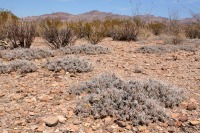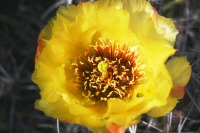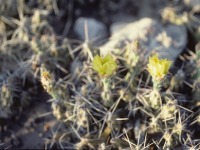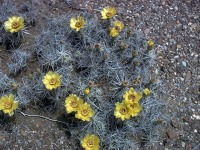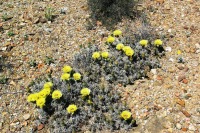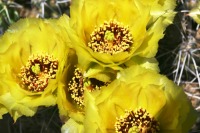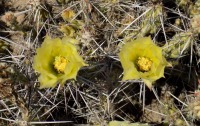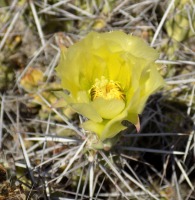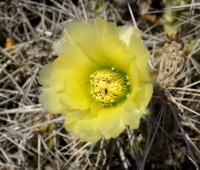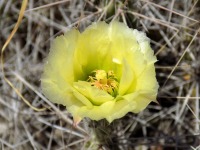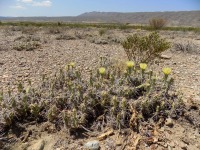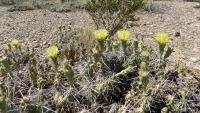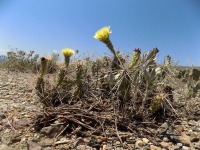Ralston & Hilsenbeck. 1989. Madroño 36(4): 226–228.
Herbarium specimen; Herbarium specimen; Herbarium specimen; Herbarium specimen; Herbarium specimen; Herbarium specimen
Original species description
Club Chollas of the Big Bend 3.0
Flora of North America treatment
What is Grusonia aggeria?
Grusonia aggeria is a dog cholla that forms clumps or mounds of short (cylindric to clavate) stem segments, 3.5-9 x 1.5-3 cm.
Details
G. aggeria tubercles are 8-18(-22) mm in size with areoles that are 3-4 mm in diameter. The areoles have whitish wool. Distal areoles have (1-)5-15 whitish spines up to 3-5 cm long. Plants are typically 30-60 cm wide and 15-30 cm tall. There are 1-3 abaxial deflexed spines–sometimes twisted or curved. Adaxial spines (0-5) are divergent and ascending, brown to blackish, +/- terete. Yellow, adaxial glochids are up to about 4 mm long. G. aggeria has undergone recent taxonomic changes. Starting as Opuntia aggeria, it was more recently renamed Grusonia aggeria and then G. aggeria. See the Taxonomy of the Opuntia schottii Complex (Cactaceae) in Texas. The most recent treatment is in Club Chollas of the Big Bend 3.0 (see Appendix E). G. aggeria has tuberous roots and is diploid.
